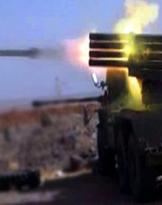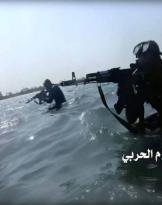It is not new, but now the die is drawn: Putin's Russia looks to the North Pole and without half measures lays the foundations for a hypothesis of future sovereignty.
Own of bases trafficking. Within the 2018 there are nine naval aviation structures that Moscow plans to build in the area, so as to protect the so-called "Arctic route", an alternative way to the Indian Ocean (and the Suez Canal) for communications between Asia and Europe .
The important news is the development not only of the bases already present in the Barents Sea, but also of the infrastructures in the Laptev Sea, an arctic area of eastern Siberia. We are talking about the island of Kotelny, a simple radar outpost at the time of the USSR and then abandoned by the military in the 90s, where the end of the works started in 2013 is near. Military structures in the remote islands of Wrangel and Schmidt should soon follow. so far mentioned only in documentaries. It is the virtual closure of the strategic circle drawn in the Federation's Arctic seas.
The defense is given by the naval and naval belt of the increasingly powerful Northern Fleet and the new S-400 missile system located at the end of the 2015 in the Severnaja Zemlja archipelago.

There are about 250 the Russian ships of the fleet that with command to Severomorsk is distributed in the bases comprised between Murmansk and Nerpichya. The logic of the "closed cities" (zakrytye administrativno-territorial'nye obrazovanija), exclusively managed by the Defense and by the Federal Atomic Energy Agency, has allowed the development of aerial naval infrastructure and sites of nuclear interest in full discretion. In Gadžievo, Ostrovno, Poljarnyi, Snežnogorsk, Zaozërsk, military structures follow one another, the pivot of a force made more fearful by decades know-how Russian on technologies in polar environments.
The Kuznetsov aircraft carrier with 17 Sukhoi embarked and 24 helicopters is the key to the strategic strength that includes underwater resources (in Safonovo, near Murmansk, the gigantic Typhoons are headquartered) and a land component that Admiral Vladimir Korolev is keen to define as growing . The 61a Marine Infantry Brigade (i White bears) based in Pechenga, it has autonomous units of the highest professional level: on all the 876 ° paratroopers battalion, the 886 ° reconnaissance battalion and the amphibious assault units which are accompanied by armored and self-propelled artillery units in constant “arctic training ".
The Pleseck Cosmodrome, active since the 50 in the Archangel region, is also part of the new Russian "polar logic". With the launch in December of 2014 of the first Angara 5 rocket capable of replacing the Soyuz, it has become the alternative to Bajkonur in Kazakhstan for the launch of "heavy carriers".
We add that for the 2018 new icebreakers are planned for 5 that would refer to Atomflot, the base of the Russian Arctic nuclear ship near Murmansk.
 What's new?
What's new?
As mentioned, actually the longa manus Russian on the Arctic is ancient history and could not be otherwise for geographical reasons.
However, there is a real strategy since 2007, when the submarine Mir-1 (mission Arktika) fixed the Russian flag 4000 meters deep on the bottom of the Arctic Ocean, symbolizing Moscow's sovereignty over a substantial slice of the waters around the North Pole. The claim is based on evidence that the depths of the Arctic constitute the extension of the Siberian continental shelf.
Only the United States, Canada, Norway and Denmark (which governs Greenland) can boast of sovereign rights over the same waters, as countries with direct Arctic views, but so far Moscow has proceeded at speeds three times faster than the others and with objectively much more solid references. It is no coincidence that the interceptions of Russian reconnaissance and bombers by the Norwegian air force (NATO) to the limit of national airspace are the order of the day.
But why the Arctic and why right now?
Beyond the Eurasian routes useful for the Russians to circumvent the encirclement and the close in the hands of others (Bosphorus and Suez), it should be remembered that the Arctic seas hide 30% of the unexplored world reserves of hydrocarbons and in 2014 the number of non-Russian ships passed through the North Pole route numbered 600; previously they could be counted on the fingers of one hand. In view of the increase in traffic, Russia puts its hands on, strong of Putin's idea that "When the dispute is inevitable, better to beat first".
On the one hand the search for new ways, on the other the search for new energies, in fact the battle for control of the North Pole has already begun. Russia, by arming the ice, has brought itself far ahead.
(photo: Киркинесская ОБрМП СФ / Sputnik / TASS)












